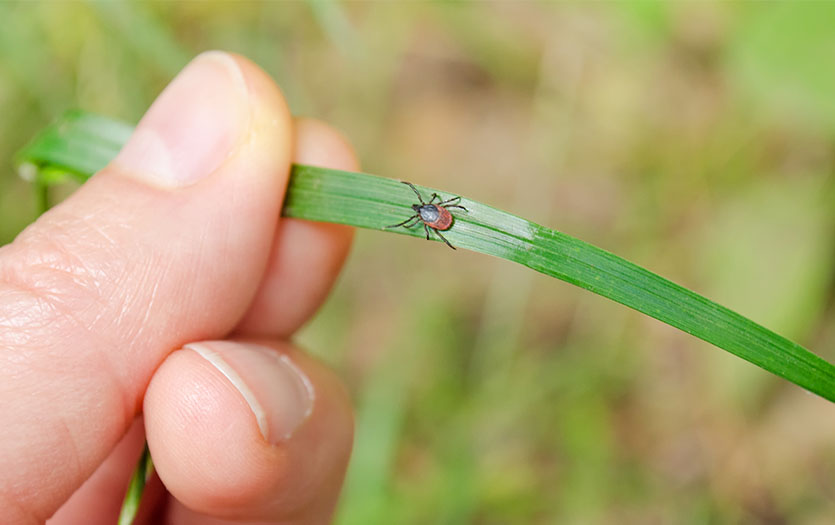Each year the Centers for Disease Control and Prevention (CDC) report thousands of confirmed cases of Lyme Disease. According to Scott Stienecker, MD, FACP, FSHEA, FIDSA, CIC, Medical Director Epidemiology and Infection Prevention, says these numbers are dependent on the migration of infected deer. “First come the deer ticks, then we see it in pets, then we see it in humans,” he said. The key to staying safe is a healthy awareness.
Know your ticks.
There are two types of ticks: deer ticks and dog ticks. Currently, the majority of ticks found in Indiana are dog ticks, which are big enough to see. Deer ticks, which carry Lyme Disease, are actually so small most people can’t see them. If you remove a tick from your body you can actually freeze it and take it to the Health Department to determine which species it is.
How to remove a tick.
Dr. Stienecker suggests a direct approach for tick removal. “While oils or petroleum jelly will work in time, it can take a while for the tick to notice and be disgusted enough to move on.” Instead, he recommends taking tweezers, grasping the tick firmly, without crushing it, on the body behind the head and then pulling straight back. Be sure to remove the mouthpart with the rest of the body to prevent additional infection.
Signs of Lyme Disease.
If a person has Lyme Disease, they won’t notice anything for the first week or so. Eventually, a bullseye rash from the site of the bite will appear and spread outward. You might notice fatigue and other flu-like symptoms, which will go away with treatment. If you notice a rash, a low grade fever or any other symptoms, seek an evaluation from a physician.
Treating Lyme Disease.
Doctors will use oral or intravenous antibiotics to treat Lyme Disease. It’s important to treat the condition quickly as, over time, Lyme Disease will attack the brain or joints. Even after the disease is eradicated, the organism can continue to cause fatigue and joint symptoms as a response. There is no topical cream that can help once a tick is embedded. It takes 8 hours of blood meal to transfer Lyme Disease.
Prevention.
You can spray clothes with Permethrin, which is available at local stores, and prevents both ticks and mosquitos. Products containing DEET are also effective. Apply products to clothing, particularly around the cuffs. Tuck pants into socks so the ticks can’t crawl up pants legs. They crawl very fast and move up very quickly, so be sure to check clothing and any exposed skin as well as your scalp. Ticks like grassy, brushy areas. Any growth that’s knee high is an exceptionally high risk area for ticks. Remember, the insect is seeking a deer, which means they will likely attach somewhere from your waist, down. Peak months for ticks are August – October, but they can appear throughout the warmer months.
The U.S. Department of Agriculture offers further guidance for performing a tick check here.




